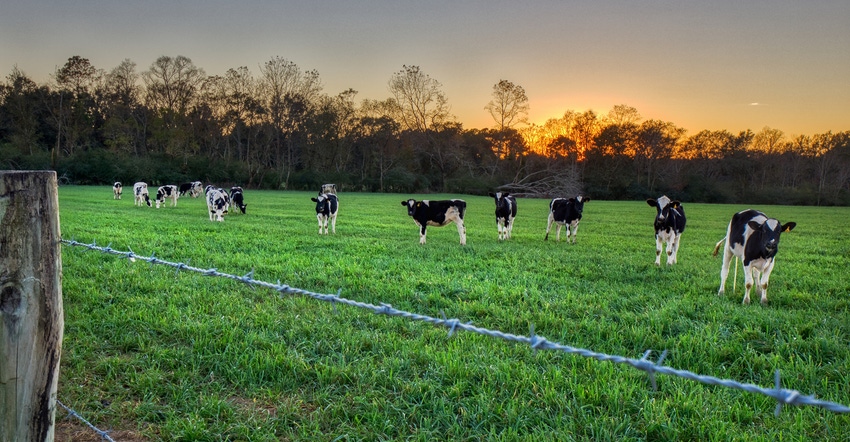
Ag economist Dan Basse, president of Ag Resource Co. in Chicago, is hopeful milk prices bottomed out in August and are headed back up through the end of the year and into 2022.
The Class III milk price dropped to $15.87 per cwt in August and is now climbing upward.
“A recovery is underway on strong export demand and curtailed milk production,” Basse said during a Professional Dairy Producers Dairy Signal webinar earlier this month. He believes Class III milk prices will stay in the range of $17 to $18.50 into 2022.
Basse said cold-storage stocks of cheese and butter are capping milk price rallies.
“We have way too much cheese and way too much butter in cold storage,” he said. “We had a record amount of dairy products in cold storage this summer — well above what we had in 2019 and 2020.”
Basse said cheese and butter consumption have not been increasing.
“It’s been hard to grow demand,” he explained. “Butter demand is relatively stable, as is cheese consumption. Demand for dairy has been strong for specialty cheeses, ice cream and yogurts — particularly drinkable yogurt.”
Basse said while people are eating more meals at restaurants than they were a year ago, restaurant traffic has not returned to pre-pandemic levels.
“We have 26% fewer restaurants than we did before COVID,” he said. “Food prices are going to stay historically high. The trend of higher food prices will continue into 2022.”
He said the delta COVID variant is impacting the U.S. economy and is causing anxiety for U.S. and world leaders.
“No U.S. shutdown is expected with 70% of our adult population vaccinated, but the dents in demand are noted. I believe this variant is causing dents in consumer confidence,” Basse said. “The virulence of this variant means we will see COVID around for a while.”
Higher beef prices
Basse said U.S. cattle prices are expected to rise into 2022, which will help accelerate dairy cow cull rates.
High cull cow prices and high cull rates are boosting milk prices, he added.
“U.S. dairy cull rates are well above what they were in 2020, which is offering future bullishness in terms of more stability in milk production,” Basse said.
Cash cattle prices are high, and dairy farmers are culling heavier than normal.
“We had big gains in milk production from the summer of 2020 through the summer of 2021, and that is starting to end,” he said. “By October, we should produce the same amount of milk as we did a year ago. Cow numbers are starting to come down, which is bringing the milk supply in balance.”
Basse said strong dairy and beef exports are also helping dairy farmers. He believes trade to China will pick up again this fall, further boosting exports.
“China needs to make good on fulfilling its Phase 1 agreement,” Basse said. “As we get into fall, China typically steps up its demand for ag products, including meats and, to some degree, dairy.”
Meanwhile, damage from Hurricane Ida on Aug. 29 to the U.S. grain export corridor near New Orleans caused it to shut down.
“Sixty percent of U.S. grain exports flow out of the Gulf of Mexico,” Basse said. “It will take weeks to restore electrical power to that area, and Cargill’s reserve elevator has substantial damage.”
The damage caused corn prices to plummet to $4.50 per bushel locally.
“It looks like the markets shot first and asked questions later,” Basse explained. “We will get things back to normal in the Gulf and grain prices will go back up, but it’s an opportunity for dairymen to lock in some lower grain prices now.”
Read more about:
Covid 19About the Author(s)
You May Also Like






